Potřebujeme váš souhlas k využití jednotlivých dat, aby se vám mimo jiné mohly ukazovat informace týkající se vašich zájmů. Souhlas udělíte kliknutím na tlačítko „OK“.
ASTM D3512/D3512M-10(2014)
Standard Test Method for Pilling Resistance and Other Related Surface Changes of Textile Fabrics: Random Tumble Pilling Tester
Automaticky přeložený název:
Standardní zkušební metoda pro Žmolkovatění odporu a dalších souvisejících povrchových změn tkanin: Random Tumble žmolkování Tester
NORMA vydána dne 1.7.2014
Informace o normě:
Označení normy: ASTM D3512/D3512M-10(2014)
Poznámka: NEPLATNÁ
Datum vydání normy: 1.7.2014
Kód zboží: NS-23898
Počet stran: 6
Přibližná hmotnost: 18 g (0.04 liber)
Země: Americká technická norma
Kategorie: Technické normy ASTM
Kategorie - podobné normy:
Anotace textu normy ASTM D3512/D3512M-10(2014) :
Keywords:
fabric, fuzz, pills, ICS Number Code 59.080.30 (Textile fabrics)
Doplňující informace
| Significance and Use | ||||||||||||||||
|
5.1 Acceptance Testing—This method of testing fabrics for resistance to pilling is not recommended for acceptance testing. If it is used for acceptance testing, it should be used with caution because the between-laboratory precision is poor. In some cases the purchaser and the supplier may have to test a commercial shipment of one or more specific materials by the best available test method, even though the test method is not recommended for acceptance testing. 5.1.1 If there are differences or practical significance between reported test results for two laboratories (or more), comparative tests should be performed to determine if there is a statistical bias between them, using competent statistical assistance. As a minimum, the test samples should be used that are as homogeneous as possible, drawn from the material from which the disparate test results were obtained, and randomly assigned in equal numbers to each laboratory for testing. Other materials with established test values may be used for this purpose. The test results from the two laboratories should be compared using a statistical test for unpaired data, at a probability level chosen prior to the testing series. If a bias is found, either its cause must be found and corrected, or future test results must be adjusted in consideration of the known bias. 5.2 The pilling of textile fabrics is a very complex property because it is affected by many factors which may include type of fiber or blends, fiber dimensions, yarn and fabric construction, fabric finishing treatments and refurbishing method. Testing before refurbishing may be adviseable. The pilling resistance of a specific fabric in actual wear varies more with general conditions of use and individual wearers than in replicate fabric specimens subjected to controlled laboratory tests. This experience should be borne in mind when adopting levels of acceptability for any series of standards. 5.3 Pills vary appreciably in size and appearance and depend on the presence of lint and degree of color contrast. These factors are not evaluated when pilling is rated solely on the number of pills. The development of pills may be accompanied by other surface phenomena such as loss of cover, color change, or the development of fuzz. Since the overall acceptability of a specific fabric is dependent on both the characteristics of the pills and the other factors affecting surface appearance, it is suggested that fabrics tested in the laboratory be evaluated subjectively with regard to their acceptability and not rated solely on the number of pills developed. A series of standards, based on graduated degrees of surface change of the fabric type being tested, may be set up to provide a basis for subjective ratings. The visual standards are most advantageous when the laboratory test specimens correlate closely in appearance with worn fabrics and show a similar ratio of pills to fuzz. Counting the pills and weighing their number with respect to their size and contrast, as a combined measure of pilling resistance, is not recommended because of the excessive time required for counting, sizing, and calculating. 5.4 The degree of fabric pilling is evaluated by comparing the tested specimens with visual standards, which may be actual fabrics or photographs of fabrics, showing a range of pilling resistance. The observed resistance to pilling is reported on an arbitrary scale ranging from 5 (no pilling) to 1 (very severe pilling). 5.5 This test method is applicable to a wide variety of woven and knitted fabrics that vary in pilling propensity as a result of variations in fiber, yarn and fabric structure, and finish. |
||||||||||||||||
| 1. Scope | ||||||||||||||||
|
1.1 This test method covers the resistance to the formation of pills and other related surface changes on textile fabrics using the random tumble pilling tester. The procedure is generally applicable to all types of woven and knitted apparel fabrics. Note 1: For other test methods for the pilling resistance of
textiles, refer to Test Methods D3511, D3514, and D4970.
1.2 Some fabrics that have been treated with a silicone resin may not be satisfactorily tested by this procedure because the silicone resin may transfer onto the cork liners in the test chamber and cause erroneous results. 1.3 The values stated in either SI units or inch-pound units are to be regarded separately as standard. The values stated in each system may not be exact equivalents; therefore, each system shall be used independently of the other. Combining values from the two systems may result in non-conformance with the standard. 1.4 This standard does not purport to address all of the safety concerns, if any, associated with its use. It is the responsibility of the user of this standard to establish appropriate safety and health practices and determine the applicability of regulatory limitations prior to use. |
||||||||||||||||
| 2. Referenced Documents | ||||||||||||||||
|
Podobné normy:
Historická
1.1.2007
Historická
1.1.2013
Historická
1.7.2014
Historická
1.10.2013
Historická
1.7.2014
Historická
1.7.2012
Doporučujeme:
Aktualizace technických norem
Chcete mít jistotu, že používáte pouze platné technické normy?
Nabízíme Vám řešení, které Vám zajistí měsíční přehled o aktuálnosti norem, které používáte.
Chcete vědět více informací? Podívejte se na tuto stránku.


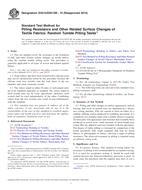
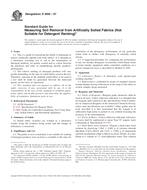 ASTM D3050-07
ASTM D3050-07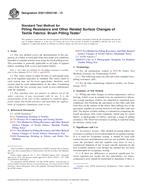 ASTM D3511/D3511M-13..
ASTM D3511/D3511M-13..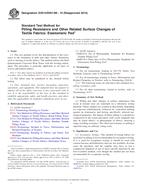 ASTM D3514/D3514M-10..
ASTM D3514/D3514M-10..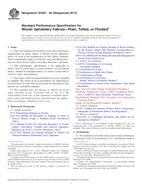 ASTM D3597-02(2013)..
ASTM D3597-02(2013)..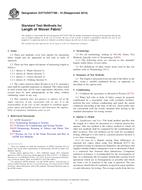 ASTM D3773/D3773M-10..
ASTM D3773/D3773M-10..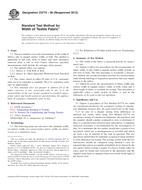 ASTM D3774-96(2012)..
ASTM D3774-96(2012)..
 Cookies
Cookies
